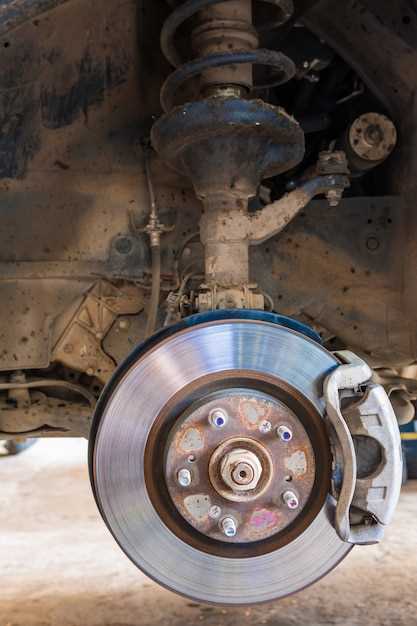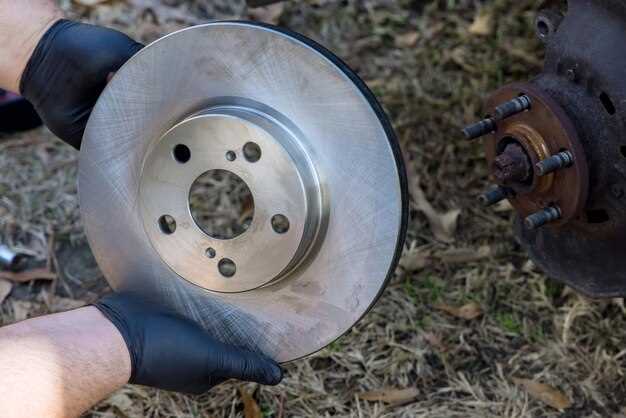Brake upgrades for better Jeep stopping power


When it comes to off-road adventures, the performance of your vehicle is paramount. One critical component that often gets overlooked is the braking system. Upgrading your Jeep’s brakes can make a significant difference, not only in terms of safety but also in overall driving experience. A quality brake kit can enhance stopping power, allowing you to tackle challenging terrains with confidence.
Many Jeep enthusiasts rely on their vehicles for rugged expeditions, where effective braking systems are essential. Stock brakes may struggle under the stress of heavy loads or extreme conditions. An upgraded brake kit designed for high performance will provide better heat dissipation, reduced fade, and improved pedal feel, ensuring you have the control you need when it matters most.
In this article, we will explore the benefits of upgrading your Jeep brakes, discuss different types of brake kits available on the market, and provide tips on how to select the right components for your specific needs. Whether you’re conquering rocky trails or navigating urban streets, the right braking system can elevate your Jeep’s performance and keep you safe on every journey.
Choosing the Right Brake Kit for Off-Roading Conditions

Selecting the appropriate brake kit for off-roading is crucial for maintaining safety and performance in challenging environments. Off-road driving often involves navigating through mud, rocks, and steep descents, which can significantly strain your braking system. Look for a brake kit that offers enhanced durability and resistance to heat, as off-road conditions generate higher temperatures that can lead to brake fade.
First, consider the material of the brake pads. Ceramic pads are often preferred for off-road applications due to their ability to withstand extreme conditions while providing consistent performance. They produce less dust, which helps maintain braking efficiency on muddy or dusty trails. Additionally, ensure that the pads have a high friction rating to enhance stopping power on uneven surfaces.
The design of the brake rotors is another critical factor. Slotted or drilled rotors are advantageous for off-roading as they promote better heat dissipation and prevent moisture buildup. This design feature can enhance grip during sudden braking situations. Look for rotors made from high-carbon materials, as they are better equipped to handle the demands of off-road driving.
Furthermore, verify that the brake kit is compatible with your Jeep model, taking into account the specific requirements for upgraded performance parts. Kits that offer features like stainless steel brake lines can improve brake feel and responsiveness, providing more confidence when navigating rough terrain.
Lastly, consider the installation process. Some brake kits come with detailed instructions and all necessary hardware, making them easier to install. Evaluate whether you prefer a DIY approach or if you need professional assistance for installation. Choosing the right brake kit tailored to off-road conditions will significantly enhance your Jeep’s stopping power and overall driving experience.
Installation Process: Steps to Upgrade Your Jeep’s Brake System

Upgrading the brake system of your Jeep is a crucial step toward enhancing performance and ensuring safety. Follow these steps for a successful installation.
Step 1: Gather Necessary Tools and Parts – Before starting the installation, collect all the required components, including upgraded brake pads, rotors, calipers, brake fluid, and any additional hardware. Additionally, ensure you have the right tools, such as a jack, jack stands, wrench set, and a brake bleed kit.
Step 2: Prepare Your Jeep – Park your Jeep on a flat surface and engage the parking brake. Loosen the lug nuts on the wheels you are working on, but do not remove them yet. Use the jack to lift the vehicle and secure it with jack stands for safety.
Step 3: Remove the Wheels – Once the Jeep is securely elevated, completely remove the lug nuts and take off the wheels. This step provides access to the braking components.
Step 4: Remove Old Brake Components – Locate the brake caliper and carefully unbolt it from the bracket. Slide the caliper off the rotor. Then, remove the old brake pads from the caliper and, if necessary, take off the rotor by unscrewing the rotor retaining bolts.
Step 5: Install New Brake Rotors – Place the new upgraded rotor on the wheel hub, ensuring it fits securely. Reattach any retaining bolts to hold the rotor in place.
Step 6: Install New Brake Pads – Insert the new brake pads into the caliper bracket. Ensure they are properly aligned and seated against the rotor for optimal contact and performance.
Step 7: Reattach the Brake Caliper – Gently slide the caliper over the new pads and rotor and bolt it back into place. Ensure everything is tightened to manufacturer specifications to prevent any movement during operation.
Step 8: Repeat for Other Wheels – Repeat the above steps for the remaining wheels, ensuring a consistent upgrade across all brake components for balanced performance.
Step 9: Bleed the Brakes – After replacing all components, it is essential to bleed the brake system to remove any air pockets. Start at the wheel farthest from the brake master cylinder and work your way forward. Use a brake bleed kit to pump fluid through until fresh, bubble-free fluid appears.
Step 10: Test the New Brake System – Once the installation is complete, carefully lower the Jeep to the ground. Pump the brake pedal several times to ensure the brake pads seat correctly. Finally, conduct a test drive in a safe area to verify the enhancement in stopping power and overall brake performance.
Performance Benefits: How Upgraded Brakes Improve Safety and Control
Upgrading your Jeep brakes can significantly enhance performance, providing a range of benefits that directly contribute to safety and control. One of the primary advantages of an upgraded brake kit is improved stopping power. High-performance brake kits utilize advanced materials and engineering to increase the friction between the brake pad and rotor, allowing for shorter stopping distances even in challenging conditions.
Better heat dissipation is another critical performance improvement. Standard brake systems can suffer from brake fade, especially during prolonged use, such as while descending steep hills or navigating rugged terrain. Upgraded brake kits are designed to withstand higher temperatures, ensuring consistent braking performance and reducing the risk of failure when it matters most.
Enhanced pedal feel is also a notable benefit. Performance brake kits often feature upgraded calipers and brake pads that provide more responsive feedback to the driver. This improved feel allows for greater control, making it easier to modulate braking force during critical maneuvers, whether on the highway or off-road.
Additionally, a good brake kit may include features like larger rotors and multi-piston calipers, which further enhance braking efficiency. These components work together to increase the overall braking surface, allowing for more effective stopping power and improved vehicle stability during braking.
In summary, upgrading your Jeep’s brake system delivers significant performance benefits, enhancing safety and control on various driving surfaces. With improvements in stopping power, heat dissipation, pedal feel, and overall braking efficiency, drivers can confidently navigate any terrain, ensuring a safer and more enjoyable driving experience.
